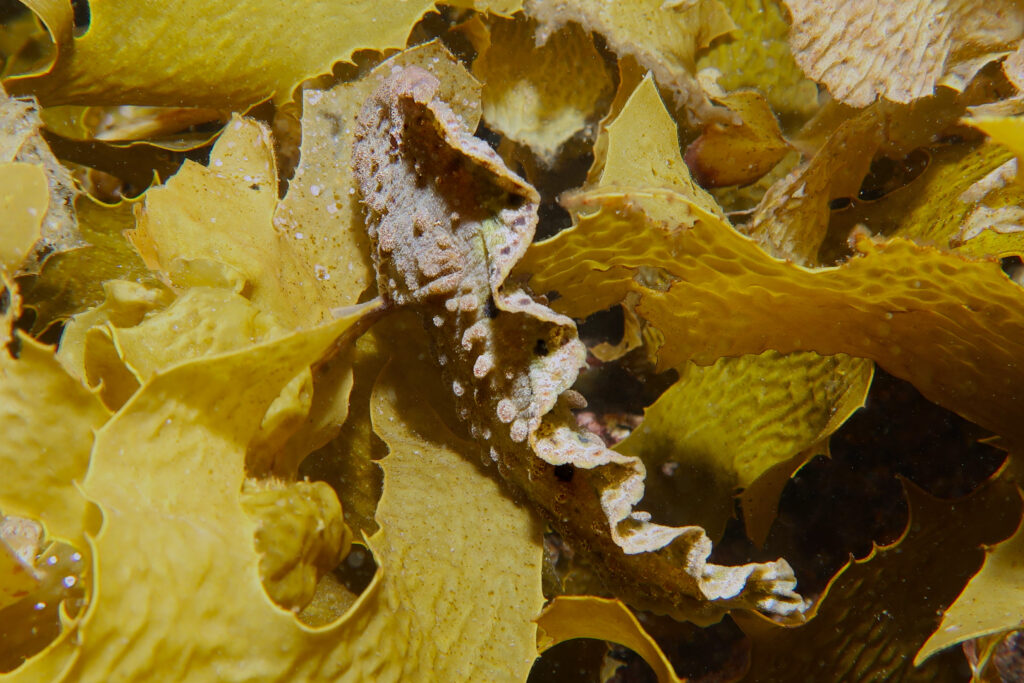In February, 2024, Reef Life Survey's South Australian team returned once again to the Fleurieu Peninsula to continue their ongoing monitoring of the region's marine biodiversity, as well as train some brand new RLS divers. Over four days, the group of both accredited RLS divers and new trainees surveyed eight RLS sites within the Encounter Marine Park, adding to years of data from this unique coastal region. These annual monitoring trips are an important step to understanding and protecting local marine biodiversity, as this time-series dataset can help researchers to detect change in the marine environment.
The trip was led by South Australian RLS coordinator Jamie Hicks, as well as RLS trainers Antonia Cooper and Danny Brock. Coming along for the ride were accredited RLS divers Flora Jennifer, Fiona McQueen and Alex Lea, who all pitched in to help the trainees find their feet (or fins). This year's trainees, coming from both the local area and interstate, were Ishtar Kenny, Beth Dawson, James Whitelaw, Manny Katz, Ged McQue, Max Davis, and Queenslander Gabry Scata. The team was made up of highly skilled divers who were all great team players, helping to turn a scientific surveying outing into a fun dive trip with friends. The annual South Australian RLS training trip enables new people to get involved with the growing South Australian RLS chapter, while also enabling and inspiring them to explore and learn about the amazing reefs of the region. For trainee divers, this involves being ‘thrown in the deep end’, as most days start with getting out on the water at dawn, and by 9am, getting under the water and ready to survey! It can be a steep learning curve (especially if you’re a novice at fish ID), but with a bunch of fish enthusiasts and experienced RLS surveyors on board, it didn't take long for the new divers to get the hang of it! By shadowing the accredited RLS divers, new trainees quickly learned the methods of laying transect lines and identifying the amazing species that are characteristic of the region.

The weather was on our side for the trip, with clear skies, calm waters, and great visibility. Lasseters Reef at Second Valley was a group favourite – being home to a huge diversity of fish, including the unique warty prowfish (Aetapcus maculatus). While this fish might not be the prettiest of the bunch, it’s highly cryptic and was a big highlight for new divers lucky enough to spot it. Dense with thick golden kelp (Ecklonia radiata) habitat, the Second Valley reef is renowned for its diversity of cryptic fish species. As this survey effort coincided with the end of the Port Jackson shark (Heterodontus portusjacksoni) breeding season, their corkscrew- shaped eggs could be found wedged in every empty crevice. Some other interesting fish finds included the beautifully iridescent southern blue devil (Paraplesiops meleagris); common in the area but always an exciting one as their shy nature means you’ve got to look a little harder. A harlequin fish (Othos dentex) was spotted at Carrickalinga Sanctuary Zone on the second day; a rare find and something to inspire the new divers to look extra hard for the cryptic fish. A few juvenile western blue groper (Achoerodus gouldii) were also seen in Rapid Head SZ, which were a crowd pleaser.
The fish and macroinvertebrate surveys were conducted on 32 transects from 8 long-term monitoring sites along the rocky reefs of the Carrickalinga SZ, Rapid Head SZ, and Second Valley, all within Encounter Marine Park. Throughout the trip, 112 different species were documented, with the yellow-headed hulafish (Trachinops noarlungae), and the tulip shell (Pleuroploca australasia) being the most abundant species of fish and invertebrate respectively. There were also some other big and impressive species seen, such as yellow-tail kingfish (Seriola lalandi), and the less gregarious southern rock lobster (Jasus edwardsii), hiding away under the rocky ledges.
While the sites were all quite close, with no more than a twenty-minute boat ride between them, each was somewhat unique. There were areas dominated by kelps, and others with more sparse and rocky habitat, with astounding differences in the fish and invertebrate communities at each site. Getting to dive across such a range of sites gave the new divers insight into different habitats and their inhabitants, each contributing to the high levels of diversity the region is renowned for.

It was an exciting and fruitful weekend away and yielded some important survey data for the RLS monitoring sites, as well as many incredible photos of some of the wide range of species the team encountered. With many keen and dedicated marine nerds coming together, the surveying and training effort connected like-minded people that are passionate about understanding and protecting the special underwater ecosystems we're lucky to call our local. On top of collecting important monitoring data, expanding our South Australian RLS network is a real highlight of the annual SA survey trips which enables RLS surveys to continue in South Australia and beyond.
The trip ran smoothly thanks to help from Dave, Jolie, and Jordan from Underwater Sports Diving Centre, who provided the charter boat, and (more importantly) the post-dive hot chocolates. We are also very grateful to project sponsors Green Adelaide (Kristian Peters), who support the Reef Life Survey program through the continuation of the Green Adelaide Rocky Reef Program. Without their support, and that of Department for Environment and Water, this trip and much of the important work from RLS divers in the area would not be possible.






















